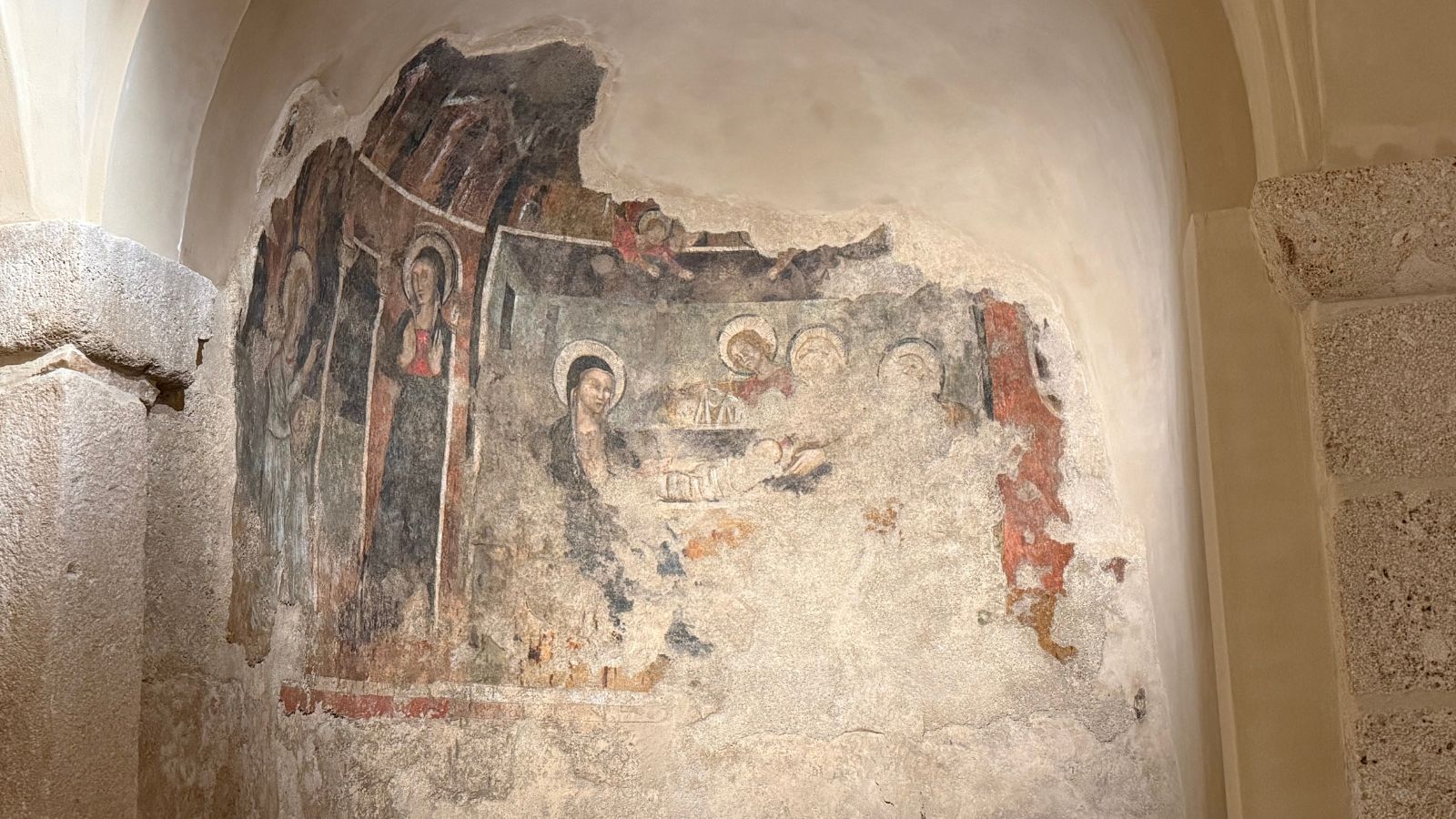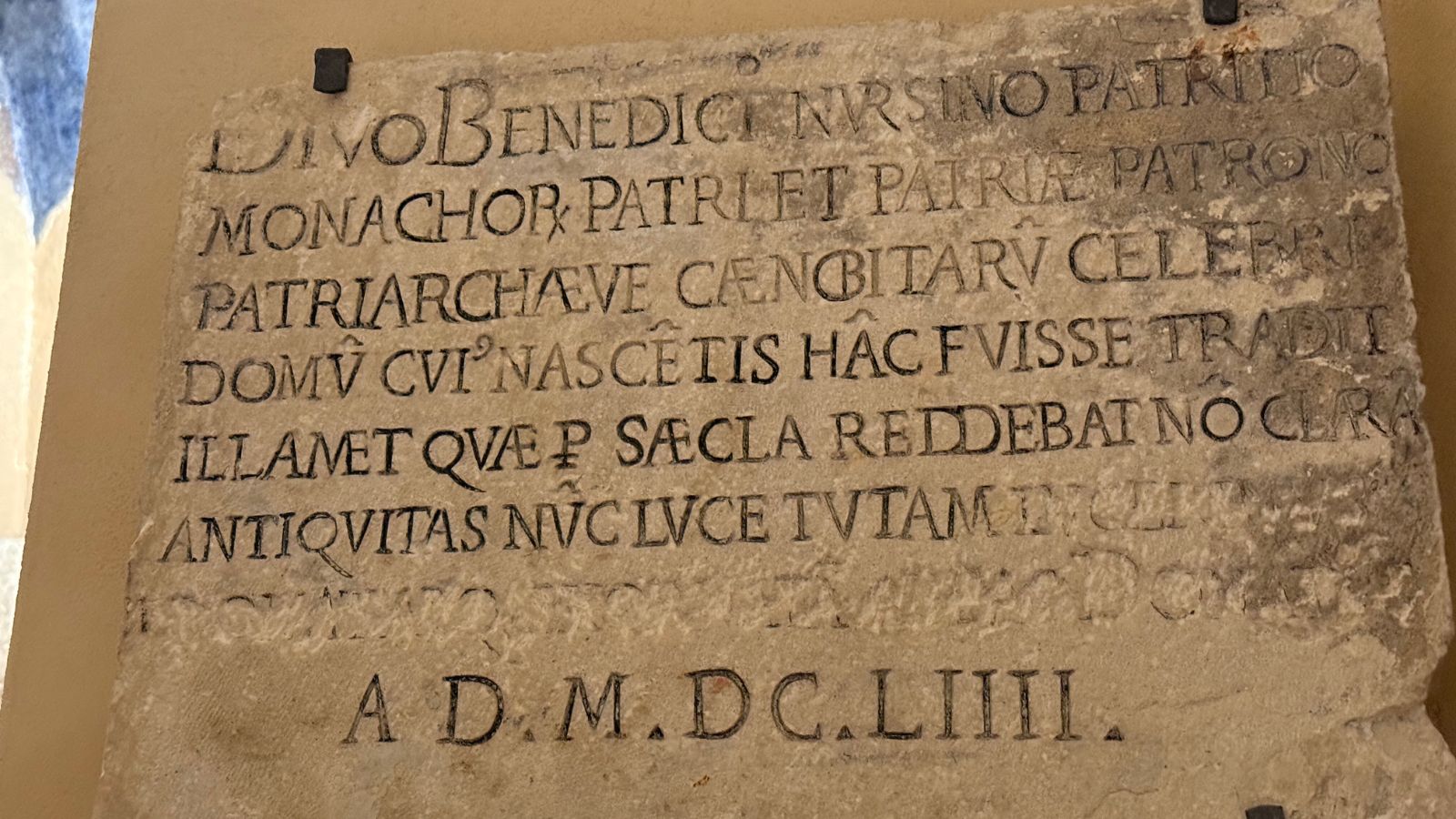Norcia – “The reconstruction of the Basilica is not simply an important and daring architectural undertaking or an intervention to recover artistic heritage; it is an act of civil and spiritual resurrection.”
With these words, drawn from the pastoral letter Listen, my son, and open your heart willingly, the Archbishop of Spoleto-Norcia, Most Rev. Renato Boccardo, accompanies the reopening of the Basilica of St. Benedict, returned to the city and to the faithful on 30 and 31 October 2025, nine years after its collapse caused by the 2016 earthquake.
The church – as the prelate recalled in an interview with Silere non possum – stands upon the remains of the house where the Patron of Europe and St. Scholastica were born, a living sign of Benedictine spirituality and European memory. After the 2016 earthquake, only the façade remained standing: eighty percent of the building had collapsed. Today, after a long and collective effort, Norcia finds its heart once again.

“The rubble does not have the last word”
The pastoral letter, which will be officially presented to the Archdiocese during the dedication ceremony, is far more than a commemorative text: it is a spiritual and civic manifesto, in which Archbishop Boccardo invites all to read the reconstruction as a parable of personal and communal rebirth.
“Listening,” which gives the document its title, is the first step of this rebirth. “Listening,” he writes, “is not merely hearing, but receiving with both mind and heart, allowing oneself to be interiorly transformed until one reaches trusting obedience.” In a time “marked by noise, dispersion, and a crisis of roots,” the voice of St. Benedict reminds us that “true reconstruction begins within — with people and communities able to unite silence and listening, memory and openness to the future.”
Thus, the reborn Basilica is not merely a rebuilt structure: it is a theological sign, a parable of what faith can still build when everything seems lost.
A House for Europe
In the central part of his Letter, the Archbishop broadens his gaze toward contemporary Europe, which he describes as “a common house that risks becoming a collection of rooms without a shared and unifying roof.”
The reference to Benedict, patriarch of the West and master of civilization, becomes an invitation to rediscover the spiritual roots of European culture. “The return to Benedict,” writes Boccardo, “is not an act of nostalgia, but an act of prophecy. Without a soul, Europe is reduced to a functional aggregation of economic and technical interests.”
From the Rule of St. Benedict, the Archbishop draws four pillars that still speak to the present age:
The balance between prayer and work (ora et labora), as the synthesis of a life unified around God;
Stability, as an antidote to modern precariousness;
Hospitality, to “welcome every guest as Christ”;
The lectio divina, a “school of listening and transformation of the heart.”
It is a language interweaving Gospel and anthropology, spirituality and civilization, restoring to European Christianity its generative role.
The Worksite and the Rebirth
The journey of rebirth was also a material one. The reconstruction works, begun on 16 December 2021, lasted less than four years and involved an investment of approximately 15 million euros, financed by the Commissioner for the 2016 Earthquake Reconstruction, the Region of Umbria, and Eni S.p.A.
The project, overseen by the Ministry of Culture and the Superintendence for Archaeology, Fine Arts, and Landscape of Umbria, made it possible to recover and reposition — “brick by brick” — the original materials, while integrating the most advanced anti-seismic technologies. Today, 30 October 2025, the completed work is presented in the Digipass Hall of Norcia, with interventions by Minister Alessandro Giuli, Commissioner Guido Castelli, President Stefania Proietti, and Mayor Giuliano Boccanera.
Tomorrow, 31 October, Archbishop Boccardo will preside over the solemn Eucharistic celebration of dedication, officially returning the Basilica of St. Benedict to worship. Concelebrating with him will be around twenty prelates — archbishops, bishops, and abbots — together with the diocesan clergy. Among those present will be Cardinal Gualtiero Bassetti, Archbishop emeritus of Perugia–Città della Pieve, and Dom Jeremias Schröder, O.S.B., Abbot Primate of the Benedictine Confederation.
For the occasion, Monsignor Marco Frisina has composed a new hymn to St. Benedict, which will be performed for the first time during the liturgy. Inside the Basilica, a new altar, ambo, and presider’s chair have been installed, adorned with bronze panels depicting Saints Benedict and Scholastica. In the presbytery now stands the reliquary of the Patron of Europe, while the left transept houses the image of Our Lady of Sorrows, long venerated by the people of Norcia.
On the evening of 29 October, the Abbot of the Monastery of St. Benedict in Monte, Dom Benedetto Nivakoff, O.S.B., presented Archbishop Boccardo with the reliquary of St. Scholastica, Benedict’s sister, preserved by the Benedictine monks. The relic was placed within the Basilica for the dedication ceremony.

To Preserve and to Propose
“A church serves only insofar as it is inhabited and lived by a living community,” reminded Archbishop Boccardo, emphasizing that the true completion of reconstruction lies not in the stones, but in the faith life that will dwell within them. The invitations he offers in his pastoral letter “Listen, my son” form a genuine program of spiritual and civil renewal, rooted in Benedictine tradition yet oriented toward the future.
The reopening of the Basilica of St. Benedict, the Archbishop explains, must not be reduced to a ceremonial act: it is the starting point for a reform of the heart and of communal life. For this reason, he proposes concrete initiatives: to make lectio divina a stable part of pastoral life, so that the Word of God continues to form consciences and guide decisions; to care for the liturgy as the first proclamation of the Gospel — a sign of a Church that is sober and radiant; to translate Benedictine hospitality into works of charity, welcoming every person in need.
Alongside these, the establishment of a Center for Benedictine Spirituality, as a place of prayer and formation, and an annual Benedictine Week to let the message of the Saint resound anew in the present. Finally, a Pact for Decent Work, developed with local realities, to promote an economy founded on justice, fraternity, and respect for the person. These are not ephemeral projects but seeds of the future — tangible signs of a faith that, like the stones of the Basilica, continues to generate civilization.
In the final pages of his Letter, Archbishop Boccardo entrusts a precise mission to the Archdiocese: “To preserve and to propose.” Preserve roots and memory, but propose them creatively to today’s world, for “to preserve without proposing is stagnation, and to propose without preserving is loss of roots.”
Thus, Norcia once again becomes a sign of an Europe capable of being reborn — from silence, from its ruins, and from its faith. The stones laid one upon another will stand firm only if the foundation is solid. So it is with faith and European civilization: without spiritual roots, every construction is destined to collapse. For this reason, Archbishop Boccardo calls all to preserve and propose the heritage of Benedict, so that his blessing may continue to fertilize history and transform the present into a future of hope.
M.P.
Silere non possum